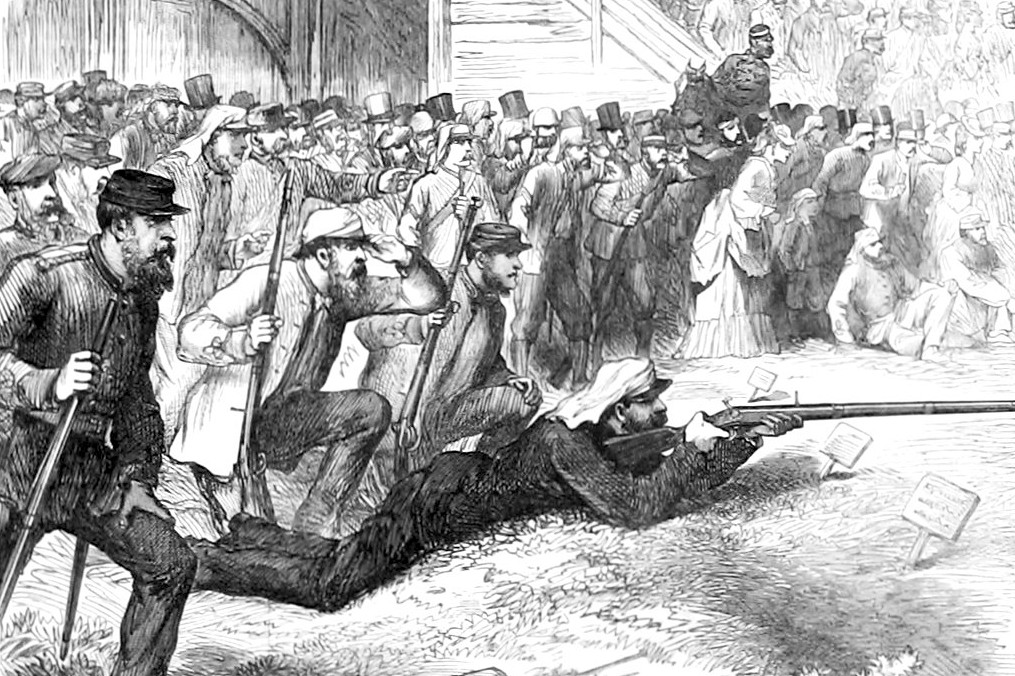You are here: Home > Firearms > Long Range Rifle Fire
Written by: W.S. Curtis
What is long range? > Historical & Literary References > Mechanically Fitting Bullets > Developments in France > Long Range Shooting
An interest in shooting at long ranges is a subject which lies close to the heart of this writer. Impelled by the ancestral voices of two of his forebears who made gunpowder under the well known name of Curtis’s and Harvey and a third who bombarded Sevastopol with 13 inch mortars, he joined the Artillery and spent six years with 25 pounder guns which left him with a taste for long distance lobbing. Civilian life and a necessary reduction in the practical ranges attainable by the order of 90% left him with little choice but Bisley’s Stickledown Range and a limit of 1,200 yards.
This is no treatise on ballistics, the author is neither a scientist nor an engineer and most emphatically not a mathematician. It is really an historical perspective from the earliest times down to the late 19th Century.
What is Long Range?
We must start by seeking a definition of what we mean by “Long Range”. This immediately poses the question, “What do we mean by Long?”.
In the beginning there was, or so we are led to believe, a proto-man called Homo Erectus. Our readers must, we hope, realise that this expression refers to his stance and not to any particular portion of his anatomy. It would appear that he had learned the art of picking up a stone and bashing his prey with it. One day as “Ugh”, for we had better give him a name, took a swing at some passing potential dinner, the stone slipped from his grasp and flew some distance. This had probably happened a great many times in the preceding few hundred thousand years with no more result than mumbled grunts of disgust as the hominid shambled over to recover his lump of rock. But this “Ugh” was a person of genius and distinction possessed of the rudiments of a brain. He connected the rock, its passage through the air, and the thump it made as it landed (possibly on his mate) with a potential for improved destruction of his quarry. Ergo, Long Range is born. This little anecdote serves to establish that “Long Range” means absolutely anything that is a bit further than it was before.
We will pass rapidly over the intervening million years or so when the perfection of every form of muscle and stored energy led to the sling, the woomera, the bow, the ballista, the mangonel and all the other numerous engines that the genius of man has devised for the destruction of his fellow creatures.
The form of stored energy that is the subject of this article is chemical – Gunpowder.
For hundreds of years as powder sought to make its way in the world its potential for long range was rather pathetic. The 15th Century bowman could outshoot any hand cannoneer and yet the evil smelling, sulphurous and patently hellish (in the medieval sense of the word) material obviously exercised an enormous fascination.
The historical reasons for the decline of the bowmen are many and complex and their economic and demographic causes are not our subject. Suffice it to say that by the 16th Century, demand for soldiers, a shortage of strong peasants trained to the bow, the curiosity of the nobility for new hunting weapons, burgeoning science and the growing number of active intelligences freed by the Renaissance, combined to advance the art or science of Gunnery so that by the 17th Century Europe was ready for the first period of rapid development. The second period was the 19th Century.
The 20th Century, in so far as it relates to guns, rifles and artillery, has advanced little beyond the outbreak of the Great War in 1914. Aircraft, atomic weapons and rockets have seen to that. Today “Long Range” means beyond the limits of the Solar System and tactical, so called “Short Range” ballistic missile systems deliver their warheads for hundreds of miles. Would Sir William Congreve have regarded 500 miles as “Short Range”?
It would be fair, therefore, to define “Long Range” as meaning either “further than before” or “further than the other fellow”, so we will go on to examine some historical and literary references.
